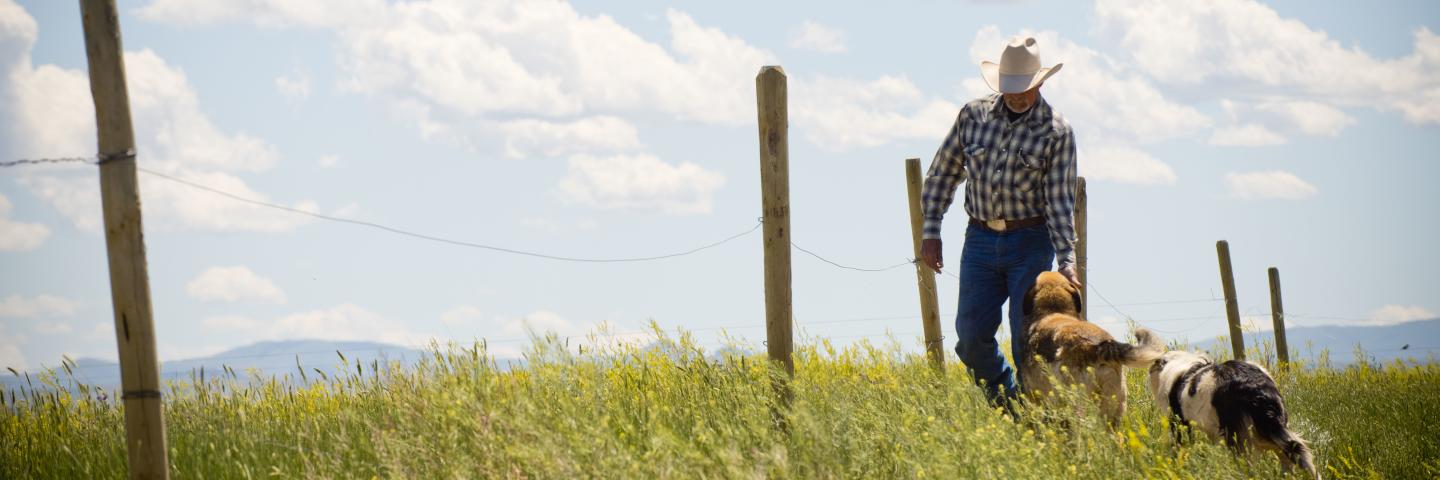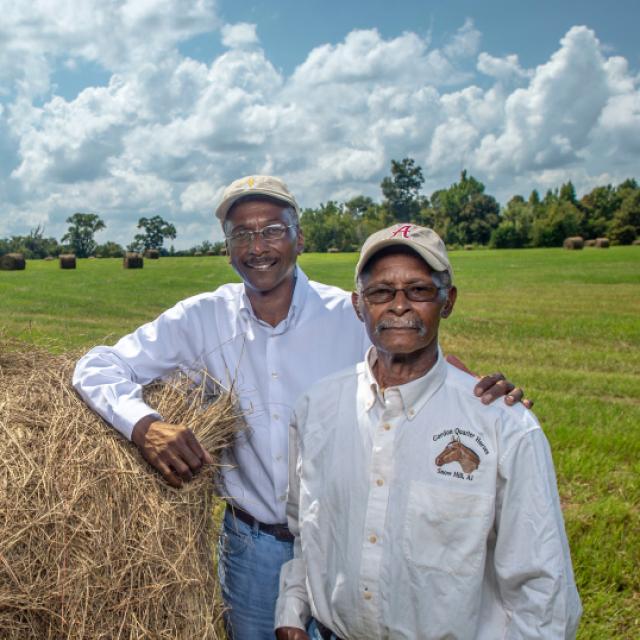
This Targeted Implementation Plan (TIP) is available in Gallatin County, Montana. TIPs are local-level Environmental Quality Incentives Program (EQIP) initiatives used by NRCS in Montana to guide on-the-ground implementation of locally developed Long Range County Plans.
Project Description
County or Counties: Gallatin
Primary Resource Concern: Surface water quality degradation resulting from nutrients, pathogens, and chemicals from manure being transported to surface water.
Time Frame: Fiscal Year (FY) 2022 through FY 2025
The purpose of this project is to reduce nutrient loading to surface water. The project area includes Camp Creek and Godfrey Creek as well as partial lengths of Hyalite Creek and the East Gallatin River. Surface water resource concerns will be mitigated by either removing or relocating 1 to 2 Concentrated Animal Feeding Operations (CAFOs) per year, with a total goal of 8 being completed over the span of the 4-year project. Prioritization will be given to CAFO facilities with closest proximity to and direct livestock access to surface water.
Conservation Practices Offered
- 342 Critical Area Planting
- 382 Fence
- 561 Heavy Use Area Protection
- 770 Livestock Confinement Facility
- 516 Livestock Pipeline
- 576 Livestock Shelter Structure
- 500 Obstruction Removal i.e. feedlot fence
- 462 Precision Land Forming
- 635 Vegetated Treatment Area
- 614 Watering Facility
- 560 Access Road
- 590 Nutrient Management
- 533 Pumping Plant
- 558 Roof Runoff Structure
- 360 Waste Facility Closure
- 642 Water Well
Detailed descriptions of these conservation practices can be found in the Field Office Technical Guide, Section 4 - Practice Standards and Supporting Documents.
Project Partners
- Gallatin Conservation District
- Gallatin Water Quality District
- Montana Department of Environmental Quality (MT DEQ)
When to Apply
Program applications are accepted on a continual basis. However, NRCS establishes application ranking dates for evaluation, ranking and approval of eligible applications. Applications received after the ranking date will be automatically deferred to the next funding period. See Montana Programs and Application Dates.
Applications must meet the intent of this initiative. For more details about this initiative, contact your local field office.
Local Ranking Questions
NRCS uses these questions to evaluate eligible applications for this project and to prioritize applications for potential funding.
- Do livestock have direct access or contact to surface water?
- Proximity of facility to surface water, answer one:
- A. 0 to 50 feet
- B. 51 to 150 feet
- C. 151 feet or greater
- Does the facility currently produce (last calendar year) more than 100 tons of manure (or liquid equivalent) annually according to MMP software values?
- Upon completion, will the relocated facility be located outside of the 25-year flood plain?
- Will a vegetative treatment area (VTA) be installed as part of the application?
- Is the proposed project on land that is permanently protected through a conservation easement or are the acres under an agreement to proceed with a conservation easement?
Additional Montana Information
Targeted Implementation Plans (TIPs) are local-level Environmental Quality Incentives Program (EQIP) initiatives used by NRCS in Montana to guide on-the-ground implementation of locally developed Long Range County Plans. These plans are part of the "Focused Conservation” strategy to guide Montana's EQIP investments. Learn more about Montana Focused Conservation and Targeted Implementation Plans.
Additional Information
Apply for Environmental Quality Incentives Program (EQIP)
The Environmental Quality Incentives Program (EQIP) provides financial and technical assistance to agricultural producers and non-industrial forest managers.
Learn MoreFarm Bill
The 2018 Farm Bill was enacted on December 20, 2018. The Farm Bill continues its strong support for conservation efforts of America’s farmers and ranchers through reauthorization and expanded flexibility of NRCS conservation programs.
Learn MoreReady to get started?
Contact your local service center to start your application.
How to Get Assistance
Do you farm or ranch and want to make improvements to the land that you own or lease?
Natural Resources Conservation Service offers technical and financial assistance to help farmers, ranchers and forest landowners.

To get started with NRCS, we recommend you stop by your local NRCS field office. We’ll discuss your vision for your land.
NRCS provides landowners with free technical assistance, or advice, for their land. Common technical assistance includes: resource assessment, practice design and resource monitoring. Your conservation planner will help you determine if financial assistance is right for you.
We’ll walk you through the application process. To get started on applying for financial assistance, we’ll work with you:
- To fill out an AD 1026, which ensures a conservation plan is in place before lands with highly erodible soils are farmed. It also ensures that identified wetland areas are protected.
- To meet other eligibility certifications.
Once complete, we’ll work with you on the application, or CPA 1200.
Applications for most programs are accepted on a continuous basis, but they’re considered for funding in different ranking periods. Be sure to ask your local NRCS district conservationist about the deadline for the ranking period to ensure you turn in your application in time.
As part of the application process, we’ll check to see if you are eligible. To do this, you’ll need to bring:
- An official tax ID (Social Security number or an employer ID)
- A property deed or lease agreement to show you have control of the property; and
- A farm number.
If you don’t have a farm number, you can get one from USDA’s Farm Service Agency. Typically, the local FSA office is located in the same building as the local NRCS office. You only need a farm number if you’re interested in financial assistance.
NRCS will take a look at the applications and rank them according to local resource concerns, the amount of conservation benefits the work will provide and the needs of applicants. View Application Ranking Dates by State.
If you’re selected, you can choose whether to sign the contract for the work to be done.
Once you sign the contract, you’ll be provided standards and specifications for completing the practice or practices, and then you will have a specified amount of time to implement. Once the work is implemented and inspected, you’ll be paid the rate of compensation for the work if it meets NRCS standards and specifications.

